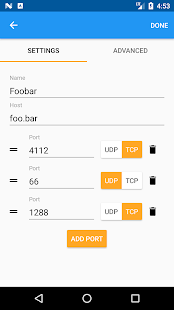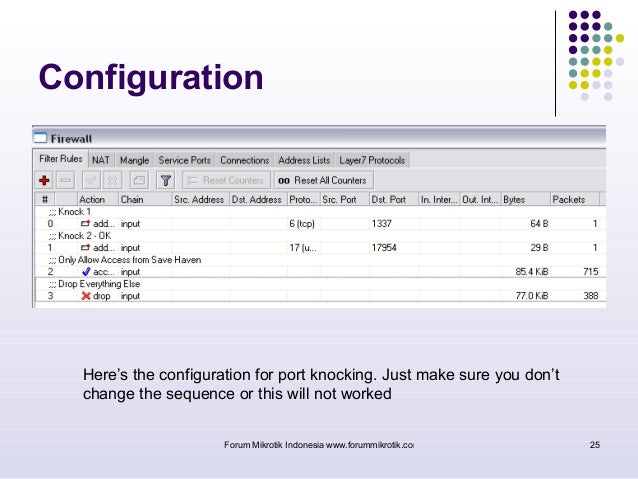Port knocking is sending connection attempts to a device in a specific pattern to unlock a specific service. An example would be to send 3 UDP connection attempts to a Mikrotik router all on different port numbers in a specific order. It will then add your IP address to a specific address list so you can winbox in. Knock host and port using tcp connection positional arguments: host Hostname or IP address of the host ports Ports to knock optional arguments: -h, -help show this help message and exit -d DELAY, -delay DELAY Milliseconds between each knock. Oct 09, 2019 Port knocking is a way to secure a server by closing firewall ports—even those you know will be used. Those ports are opened on demand if—and only if—the connection request provides the secret knock. Knockd automatically replaces%IP% with the IP address of the client that sent the knock, so you can open the port only to the authorized client. This controls access to port 22 on the router, but it's not compatible with OpenWRT's iptables setup, and I don't want to SSH into the router, I want to use it to enable port forwarding to an SSH. Port knocking is a technique that allows you to have zero open ports on a server, while still allowing connections from trusted clients. In the simplest case, port knocking does what it sounds like: You disallow all connections to all ports on your server, using your favorite firewall.
Name
knock - port-knock clientSynopsis
knock [options] <host> <port[:proto]> [port[:proto]] ...Description
knock is a port-knock client. It sends TCP/UDP packets to each specified port on
client. It sends TCP/UDP packets to each specified port on host, creating a special knock sequence on the listening server (see the knockd
host, creating a special knock sequence on the listening server (see the knockd manpage for more info on this).
manpage for more info on this).Options
Port Knock Client Login
- Port Knock Client Meaningknockd